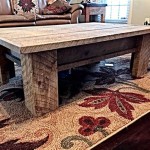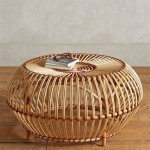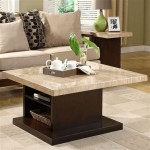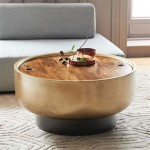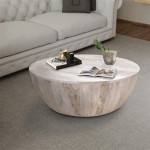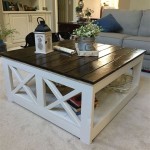How Tall Should A Table Lamp Be On An End Table?
Determining the appropriate height for a table lamp on an end table is crucial for achieving both optimal illumination and aesthetic balance within a room. The selection process involves considering several factors, including the height of the end table itself, the function of the lamp, and the overall style of the space. A well-chosen lamp not only provides task lighting where needed but also contributes significantly to the ambiance and visual harmony of the room.
The primary objective when selecting a table lamp for an end table is to ensure that the light source is positioned at the correct height relative to the seating area. This ensures that the light is effectively distributed for reading, conversation, or other activities. Equally important is the lamp's visual impact; it should complement the surrounding furniture and décor without overpowering the space. A lamp that is too short may not provide adequate light, while one that is too tall can be visually distracting and even create glare.
Establishing the Ideal Height Relationship Between the Lamp and Seating
The generally accepted guideline for the combined height of an end table and lamp is between 58 and 64 inches. This measurement is based on the average height of sofa and chair arms and is designed to position the bottom of the lampshade approximately at eye level when seated. Achieving this height range minimizes glare and provides comfortable task lighting.
To determine the ideal lamp height, begin by measuring the height of the end table. Subtract this measurement from the target height range (58-64 inches). The resulting figure indicates the appropriate height range for the table lamp itself. For instance, if the end table is 24 inches tall, the ideal lamp height would fall between 34 and 40 inches. This calculation provides a solid starting point for selecting the right size lamp.
It's important to note that this guideline is not absolute and may need to be adjusted based on individual preferences and the specific dimensions of the furniture. If the seating area is lower than average, a slightly shorter lamp may be necessary. Conversely, higher seating may necessitate a taller lamp. Consider the specific use of the lamp as well. If it's primarily intended for reading, a slightly taller lamp may be beneficial to direct more light onto the reading material.
Furthermore, the shape of the lampshade can influence the perceived height of the lamp. A tall, slender shade can make the lamp appear taller than it actually is, while a shorter, wider shade can have the opposite effect. These visual cues should be taken into account when making the final selection.
Considering the Functionality of the Table Lamp
The intended function of the table lamp is a critical factor in determining its appropriate height. Lamps used primarily for reading require a different height and positioning than those intended for ambient lighting. Reading lamps typically need to be taller to direct light downwards onto the reading material. Ambient lighting lamps, on the other hand, can be shorter, as their primary purpose is to provide general illumination and create a specific mood.
For reading purposes, consider lamps with adjustable arms or shades. These features allow the user to direct the light precisely where it's needed, regardless of the lamp's overall height. The ability to adjust the light beam is particularly useful for individuals with varying reading preferences or visual needs.
If the table lamp is intended to serve multiple purposes, such as both reading and ambient lighting, a mid-height lamp with a dimmer switch may be the most versatile option. A dimmer switch allows the user to adjust the light intensity to suit different activities and create the desired atmosphere. This is particularly useful in living rooms and bedrooms where the lighting needs may vary throughout the day.
In addition to the primary function, consider the lamp's switch mechanism. A switch that is easily accessible is essential for convenience and usability. Touch lamps, for example, are a popular choice for bedside tables, as they can be easily turned on and off with a simple touch, even in the dark. Cord switches, while functional, may be less convenient to locate in dimly lit environments.
Balancing Aesthetics and Room Decor
While functionality is paramount, the aesthetic aspects of the table lamp are equally important. The lamp should complement the overall style of the room and enhance its visual appeal. Consider the lamp's base material, color, and shape in relation to the surrounding furniture and décor. A well-chosen lamp can serve as a focal point and add a touch of personality to the space.
In a traditional setting, a lamp with a classic design, such as a candlestick base or a ceramic base with an empire shade, may be appropriate. In a more contemporary setting, a sleek, minimalist lamp with a metal base and a drum shade might be a better fit. Consider the color palette of the room as well. A lamp with a contrasting color can add visual interest, while a lamp that blends seamlessly with the décor can create a more cohesive look.
The size and shape of the lampshade are also important considerations. A lampshade that is too small can make the lamp appear top-heavy, while a lampshade that is too large can overwhelm the base. The shade should be proportional to the base in both size and shape. As a general rule, the width of the lampshade should be approximately the same as the height of the lamp base.
Furthermore, consider the texture and pattern of the lampshade. A textured lampshade can add depth and dimension to the lamp, while a patterned lampshade can introduce a touch of visual interest. However, be mindful of the surrounding décor and avoid choosing a lampshade that clashes with the existing patterns and textures. A simple, neutral lampshade is often the safest and most versatile option.
Finally, remember to consider the scale of the lamp in relation to the end table itself. A small end table may not be able to accommodate a large, bulky lamp. Conversely, a large end table can easily support a more substantial lamp. The goal is to create a balanced and harmonious composition that enhances the overall aesthetic of the room.
In summary, selecting the correct height for a table lamp on an end table involves considering the height of the end table, the placement of seating, the function of the lamp, and the overall aesthetics of the room. It's a process of achieving the right balance in height, function, and style for optimal lighting and visual appeal.

How Tall Should End Table Lamps Be

How Tall Should A Lamp Be On An End Table Perfect Tips Quick Guide Hirosart

22 Living Room Lighting Rules You Need To Know Laurel Home

The Right Height Of A Table Lamp For Your End Fred Gonsowski Garden Home

How Tall Should A Lamp Be On An End Table Perfect Tips Quick Guide Hirosart

Ask Maria What S The Right Scale For Bedroom Lamps Lighting

How Tall Should A Lamp Be On An End Table Perfect Tips Quick Guide Hirosart

Ask Maria What S The Right Scale For Bedroom Lamps Lighting

How Tall Should A Lamp Be On An End Table Perfect Tips Quick Guide Hirosart

How Tall Should A Lamp Be On An End Table Perfect Tips Quick Guide Hirosart
Related Posts

